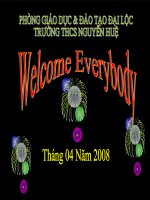Bali morning of the world
Bạn đang xem bản rút gọn của tài liệu. Xem và tải ngay bản đầy đủ của tài liệu tại đây (25.95 MB, 99 trang )
Bali
MORNING OF THE WORLD
Text by Nigel Simmonds
Photographs by Luca Invernizzi Tettoni
T U T T L E Publishing
Tokyo Rutland, Vermont Singapore
Published by Periplus Editions (HK) Ltd.
The Tuttle Story: “Books to Span the East and West”
www.tuttlepublishing.com
Text copyright © 1997 Periplus Editions (HK) Ltd.
Photographs copyright © 1997 Luca Invernizzi Tettoni
All rights reserved.
ISBN: 978-1-4629-1362-6 (ebook)
Distributed by
North America, Latin America and Europe
Tuttle Publishing
364 Innovation Drive, North Clarendon, VT 05759-9436, USA
Tel: 1 (802) 773 8930; Fax: 1 (802) 773 6993
; www.tuttlepublishing.com
Asia Pacific
Berkeley Books Pte Ltd
61 Tai Seng Avenue #02-12, Singapore 534167
Tel: (65) 6280 3320; Fax: (65) 6280 6290
; www.periplus.com
Indonesia
PT Java Books Indonesia
Jl. Rawa Gelam IV No. 9, Kawasan Industri Pulogadung
Jakarta Timur 13930, Indonesia
Tel: 62 (21) 451 5351; Fax: 62 (21) 453 4987
; www.periplus.com
Printed in Malaysia
16 15 14 13
7 6 5 4 3 2 1
1307TW
Right: Wayang kulit, the shadow puppet play. To pass beyond this simple
cloth screen is to enter Bali’s enchanting world of spirits and demons.
Opposite: Sunrise at Sanur, with the sacred Mount Agung in the background.
It was Pandit Nehru, India’s first prime minister, who first called Bali the
“Morning of the World”.
Many people are surprised to learn that the world’s largest publisher
of books on Asia had its humble beginnings in the tiny American
state of Vermont. The company’s founder, Charles E. Tuttle, belonged
to a New England family steeped in publishing.
Immediately after WW II, Tuttle served in Tokyo under General
Douglas MacArthur and was tasked with reviving the Japanese
publishing industry. He later founded the Charles E. Tuttle
Publishing Company, which thrives today as one of the world’s
leading independent publishers.
Though a westerner, Tuttle was hugely instrumental in bringing
a knowledge of Japan and Asia to a world hungry for information
about the East. By the time of his death in 1993, Tuttle had published over 6,000 books on Asian culture, history and art—a legacy
honored by the Japanese emperor with the “Order of the Sacred
Treasure,” the highest tribute Japan can bestow upon a non-Japanese.
With a backlist of 1,500 titles, Tuttle Publishing is more active
today than at any time in its past—inspired by Charles Tuttle’s core
mission to publish fine books to span the East and West and provide a greater understanding of each.
CONTENTS
Jntroduction
4
History
14
The Island
22
Religion &: Ritual
38
Arts &: Crafts
6o
Theatre &: Dance
72
Visiting Bali
86
Se lected further Reading
96
4
'
BAll: MORNING OF THE WORLD
' e road ran on and on, a wide avenue between stone walls. Everywhere
temples lifted their stone gates, carved as feathery as the banyan trees
above them. The villages were miles of walls, thatched against the rain,
with hundreds of prim pillared porticos, and groups of damsels sitting by
them. Beyond those parapets were homes. What sort of people lived there?
What manner of life did they lead behind their sheltering barriers?"
Hickman Powell,
The
Last Paradise,
1930
INTRODUC TION
For four years I have lived in Bali. I arrived on holiday with very little knowledge of the "Island of the Gods"-when I stepped off the Garuda jumbo jet in
October 1992 I knew next to nothing of its religion, had only a vague conception of its immense beauty and no real understanding of the extraordinary
manner in which its people organize their lives. Today I feel lucky to have
experienced an island which remains remarkable in a thousand different ways.
I knew this much at that time: many before me had been charmed by Bali's
powerful magic. Hickman Powell, a 1930s visitor, called it "a vast spreading
wonderland" and "the embodied dreams of pastoral poets". To the writer and
musicologist Colin McPhee, another early fan, it exhibited a "golden freshness",
INTR O DU C TI O N
where everyone was either a dancer or an artist. Pandit Nehru-
girls, a vision of collective beauty descending in size right down
India's first prime minister-immortalized the island in the
to a last little toddler, a perfect copy in miniature of the first skin-
1950s when he called it the "Morning of the World': a kind of
ny, bejewelled girl. We sat entranced in our jeep on the side of
tropical Garden of Eden where, according to another early
the road and were captivated by the beat of Bali's hypnotic drum.
description, "care-free islanders" lived as "happy as mortals can
As life progressed I learned more about the culture of Bali.
be". Could Bali really be this good, I wondered?
I learned that children were carried everywhere, held in the
I began to find out on my first visit. Setting off from the
protective arms of a family member until three months old. I
artists' town of Ubud in the grassy central lowlands, a compan-
listened as a priest, dressed in white, chanted a mantra in an
ion and I drove through the glaucous pre-dawn twilight to
ancient language, and watched while an entire village clasped
watch the sun rise over Mount Batur. As we emerged onto the
its palms together in prayer. I marvelled at the vibrant offerings
lip of a long-defunct crater, within which stretched a vast vol-
prepared for the temple, and the simple gesture of a welcome
canic valley, a single purple cloud hovered over a glassy lake
smile. I saw dance and dramas to evoke the spirits, and shadows
like a fanciful addition to an already celestial scene. And then
that fired the imagination. I learned to love the island.
the sun exploded above us in a blush of soft carmine hues, and I
was torn between a feeling of magical wonder, of being present
on the day the world was born, and an idea of what it must be
like to spend a lifetime blind, and then see colour and shape for
the first time. 'What is this place?", I remember thinking.
As if we needed more, the island handed us an even greater
spectacle. Driving back to a recently rented thatched house in
the rice fields, we were greeted by a pageant of colourfully costumed worshippers tripping their way through the dazzling
green landscape to a twirly-edged temple in the distance. Dressed
in white and yellow, hot orange and bright blue, a magnificent
parade of Balinese women walked in front of an ornately carved
golden sedan chair, its occupant a boy of no more than 10 years.
Behind this little king, with his adult gaze and regal persona,
trouped brown-skinned and black-haired men, their features
smooth and manner proud. And then more-a line of teenage
7
Previous page: The lotus,
the frangipani and an
ornately carved temple gate
in Ubud .. . a heady trinity
which many believe still
puts Bali above other Asian
destinations.
Opposite: Pura Ulun Danu
Bratan, the temple of the
Lake goddess near Bedugul
in north Bali.
Below: Festival offerings
for the gods.
8
BAll: MORNING OF THE WORLD
Above: Bali 's rugged eastern mountains viewed from Kintamani.
Opposite: Jukung- traditional Balinese fishing boats.
These days, I understand Bali a little better than I did on that
first early morning in Batur-like a wised-up city boy initially
enamoured with the country farm, I now recognize an earthly
pragmatism which goes beyond the geographic splendour of
rural living. Life is not easy for everybody on Bali. Their deep
and sensual religion offsets the daily hardship of a lifestyle that
in many quarters remains largely unchanged since the 17th cen-
INTRODUCTION
tury. Yet I continue to recognize within the culture an extraordinary sense of community, one which transcends our
Western ideals of liberty and individualism and puts cooperation above competition. This, perhaps more than anything else,
is the real substance of Bali's beauty. It is an island populated by
a people who know how to live together. Few cultures can say
the same, even though many may try.
9
Left a nd right: " N o feast is complete in Bali,"
wrote the Mexican expatriate M iguel
Covarrubias in 1937, "without music a nd elaborate dramatic and dance performances; no
one would dream of getting married, or holding
a cremation, or even of celebrating a child' s
birthday, without engaging troupes of dancers
and actors to entertain the guests and neighbours." Dance and drama remain central to the
Balinese way, colourful spectacles in the life of
the culture. In fact Covarrubias and his wife
became such enthusiastic theatre-goers during
their time on the island they " sometimes had to
make a point of staying home to catch up w ith
lost sleep". The Mexican chronicler wrote in his
sti ll definitive book, Island of Bali: " Even the
tired peasant who w orks all day in the fields
does not mind staying up at night to watch a
show, and the little children who invariably
make up the front rows of the audience rema in
there until dawn for the end, occasionally huddled together taking naps, but wide awake for
the exciting episodes of the play. " Next to having good orchestras, a fine group of dancers is
an imperative need for the spiritual and physical well-being of the community. When a society has enough money for the elaborate costumes need ed for public appearance, the village baniar or community association g ives an
inauguration festival to bless the clothes. A ll
actors, dancers or story-tellers undergo the some
ceremony-in the case of a dancer, a priest
uses the stem of a flower to inscribe magic syllables on the face, head, tongue and hands in
order to make the dancer attractive to the eyes
of the public. It is not only on this occasion that
dancers pray for success; before every performance they make small offerings to the deities
of the dance.
Right: The /egong, for which this girl is
dressed, is often said to be the finest of all
Balinese dances. Three little dancers, usually
portraying an air of infinite boredom, sit on
mats in front of the orchestra . They are dressed
from head to foot in silk overlaid with glittering
gold leaf and on their heads they wear great
helmets of gold ornamented with rows of fresh
frangipani blossoms. The girl who sits between
the two legongs, their attendant or liondong,
waits until the moment is right, then to the
accompaniment of the game/an orchestra gets
up lazi ly and stands in the middle of the dancing space. "Suddenly," writes Miguel
Covarrubias, "at an accent from the orchestra,
she strikes an intense pose: her bare feet flat on
the ground, her knees flexed, she begins a lively
dance, moving briskly, winding in and out of a
circle, with an arm rigidly outstretched, fingers
tense and trembling , and her eyes staring into
space. At each accent of the music her whole
body jerks; she stamps her foot, which quivers
faster and faster, the vibration spreading to her
thigh and up her hips until her entire body
shakes so violently that the flowers of her headdress fly in all directions. The gradually growing
spell breaks off unexpected ly and the girl glides
with swift side-steps, first to the right, then to the
left, swaying from her flex ible waist while her
arms break into sharp patterns at the wrists and
elbows. Without stopping , she picks up two
fans that lie on the mat and continues dancing
with one in each hand , in an elegant, w inding
style."
Overleaf: Images of Bali , a kaleidoscopic
cu lture where children are reserved a specia l
place close to the gods .
12
BALl: MORNING OF THE WOR LD
I NTRODU C TION
13
14
BALl : M O RNING OF THE W O RLD
HISTORY
..-.
,,f,
.::7
:~:~: :S~Ji
~f
is n
gifted people of mixed race, .:ndowed with a great s.:nse of humour and a
great sense of style-and with a suppleness of mind which has enabled
them to take what they want of alien civilisations which have been reaching them for centuries and to leave the rest."
Beryle De Zoete and Walter Spies,
Dance and Drama in Bali,
1938
As a pearl develops from a single gritty core, so Bali's culture has grown from a nugget of indigenous belief, on to which has been
slowly layered centuries of Javanese, Buddhist and Hindu civilisation. This grafting on of alien civilisation to animist beliefs has given
us the Balinese culture which we know today.
As early as several centuries before the birth of Christ the island is thought to have been populated by herders and farmers, people
who used bronze and iron to make implements and jewellery-early grave sites found in the mountains have revealed ancient stone
seats and altars, as well as coffins sculpted in the shape of giant turtles. Certainly these people engaged in some form of ancestor worship, but beyond that little is known about Bali's first inhabitants, except that they were probably descended from migrants who
moved south from Yunnan in China over a period of several thousand years BC.
Today some Balinese communities still claim ancestry from
those early migrants. Called Bali Aga, or Bali Asli, they continue
to live in villages isolated and independent from the general
island system. These clans-one based in Trunyan on the shores
of Lake Batur, another in Tenganan close to Candi Dasa, and the
third at Sembiran on the northern coast near Tejakula-maintain
a mountain aloofness from their fellow Balinese that sometimes
borders on the brusque. The Tenganan clan still forbids marriage
outside the village, a ruling which seems destined to ensure
their gradual demise; the one at Trunyan shuns the conventional
cremation rites of the rest of Bali and instead leaves the bodies of
its dead to decompose on a ceremonial hillside next to Lake Batur.
Of the few clues to the island's early pre-history perhaps the
most noteworthy is the "Moon of Pejeng", a huge bronze gong
now enshrined in a temple at Pejeng near Gianyar. Still considered to have living power, this magnificent two-metre long
kettle-drum is decorated with frogs and geometric motifs that
probably originated from an area around Dongson, in northern
Vietnam. Again, no-one really knows how the drum arrived in
Bali, or when-yet the Balinese believe it to be a thing of magic,
Previous page: Bali, around 1720, as depicted by Dutch cartographers.
Photograph courtesy of Antiques of the Orient.
Opposite: Goa Gajah, the 11th-century elephant cave, so-called because
reliefs carved around its mouth were at first thought to resemble elephant
ears. The cave is thought to have been created during the period of Bali's
first contact with the Hindu and Buddhist population of Java.
Right, top: Funeral temples cut into the rock at Gunung Kawi, a complex of
royal monuments dating from the 11th century. The site is thought to be connected to the East Javanese King Airlangga , who was of Balinese descent.
Right, middle: Fountains at Goa Gajah, which was discovered by
archaeologists in 1923.
Right, bottom: Rock reliefs at Yeh Pulu, dating from the 14th century.
Close by is a sacred well, but little is known about the carvings.
18
BAll: MORNING OF THE WORLD
HIST O RY
one of the subangs, or decorative ear plugs of the moon. Long ago,
according to local lore, the subang fell to earth and disturbed
some thieves. One of them, braver than the rest, climbed the tree
where the subang had been caught and urinated over it to try to
extinguish its bright light. The thing promptly exploded, killing
the thief, and fell to earth in its present shape.
In spite of the "Moon of Pejeng" discovery, many scholars
believe it was only with the advent of writing, imported from
India via Java, that any reliable evidence of Bali's early history
begins to emerge. Bali's contacts with the Hindu and Buddhist
population of Java-which had already been influenced via
trading passages from India and China-is thought to have started around the 8th century
AD.
At this time relations between
Java and its smaller neighbour were friendly, a situation that
was to continue more or less right up until the 11th century. By
the middle of the 13th century, however, Bali had been vanquished, if not entirely colonized. By the 14th, it was brought
entirely under the kingdom of King Hayam Waruk, a famous
ruler of the mighty Majapahit empire that dominated East Java
from the end of the 13th century until the 16th.
As a direct result of this occupation, a number of Javanese
nobles and courtiers are believed to have been sent to Bali, taking with them their dances, their caste system and a variety of
ceremonies which were assimilated into the rich tapestry of
indigenous beliefs and rituals. To this day, Bali is dominated by a
Opposite: The Bale Kambang floating pavilion in front of the old palace at
Kerta Gosa, Bali's former centre of justice. The palace was also the site for
the mass ritual suicide during conflict with the Dutch colonialists in 1908.
Right: Balinese royalty at the turn of the century. The kris or sacred dagger
holds a mythical place in the island's culture.
19
20
BALl: MORNING OF THE WORLD
caste system that can be attributed to the Majapahit period:
Despite Indonesia's latter day status as a republic, most Balinese
people still recognize the four classes of brahmana, satria, wesia and
sudra. Those who did not want to participate, we are told, fled to
the mountains, where they became Bali Aga, or "mountain people".
As Islam began to establish itself in Java, so the Javanese
courtiers and their families, along with other remnants of the
once mighty Majapahit kingdom, became more established in
Bali. By the 18th century they had begun to form separate
realms; a hundred years later they had divided the island into
nine great territories that still exist today as the major administrative regions: Karangasem, Klungkung, Bangli and Gianyar in
the east and central regions; Buleleng in the north; Mengwi,
Badung and Tabanan in the south, and Jembrana in the west.
It was in this context that early European traders and adven-
turers found the island during their quests east in search of
wealth and territory. One account, from the 1595 voyage to the
Indies by Cornelius de Houtman, described meeting with the
"king", a man who sat "on a platform around three feet above the
ground", and who had "around fifty deformed men, both dwarves
and other types, who from their early years [had] their legs and
arms bound, so that they [had] postures like the figures on the
hilts of their poniards". This same king also had 200 wives and a
chariot drawn by a pair of white buffaloes.
Later came the traders of the Dutch East India Company, "an
organisation", says the Mexican writer, Miguel Covarrubias,
"whose goal was the unlimited exploitation of the islands". The
VOC, as it was otherwise known, promoted wars, seized lands,
AUX liNDES NEERLANDAISES
established monopolies of opium and collected revenues from
HISTORY
the Balinese that were even greater than those exacted by local
princes. The traders did everything possible to gain favour with
these Balinese Rajas, but the Balinese remained aloof from Dutch
attempts to control the islands. One by one, however, the regions
came under Dutch control, and by 1908, following the now
famous puputan or mass ritual suicide of around 2,000 Balinese
who faced certain defeat at the hands of a large Dutch army, the
island had become wholly and officially under Dutch rule.
Following its colonization, the island was administered from
Jakarta, although most of its beliefs and practices were allowed
to continue unhindered. Tourism began to flourish as the KPM
steamships brought travellers from Europe and America, but the
industry came to an abrupt halt with the landing of Japanese
soldiers in Sanur in 1942. Following unsuccessful attempts by
the Dutch to recolonize Bali in the wake of World War II, the
island remained practically closed as Indonesia's struggle for
independence took hold. Bali remained locked tight right up
until the late 1960s, during which time Indonesia underwent
major internal power struggles that left hundreds of thousands
dead. Bali was heavily involved in the political upheavals that
pitched Nationalist against Communist, and many who lived
here were killed or executed as the island was purged. It may
seem hard to believe, but in spite of Bali's image as an earthly
paradise, its rivers have often run thick with blood.
Opposite: The puputan or mass ritual suicide in Badung, as depicted by
a French weekly magazine of the day. The Balinese refused to fight, walking
instead into the Dutch guns, or spearing themselves and each other with their
ceremonial daggers.
Right, top: The Raja of Gianyar with Dutch officials and their wives taken
during the 1930s.
Right, bottom : A vintage 1930s portrait of the eight Balinese Rajas
gathered in the Gianyar palace grounds.
21
24
BALl: MORNING OF THE WORLD
THE
'
'
ISLAND
li belongs to the Gods. The inhabitants are no more than transitory
tenants of the land, who cultivate it and are nourished from its yield during the short span of the body's residence on earth. People die, but the
earth remains-the property of the gods.
Jane Belo,
Bah Temple festival, 1953
"









